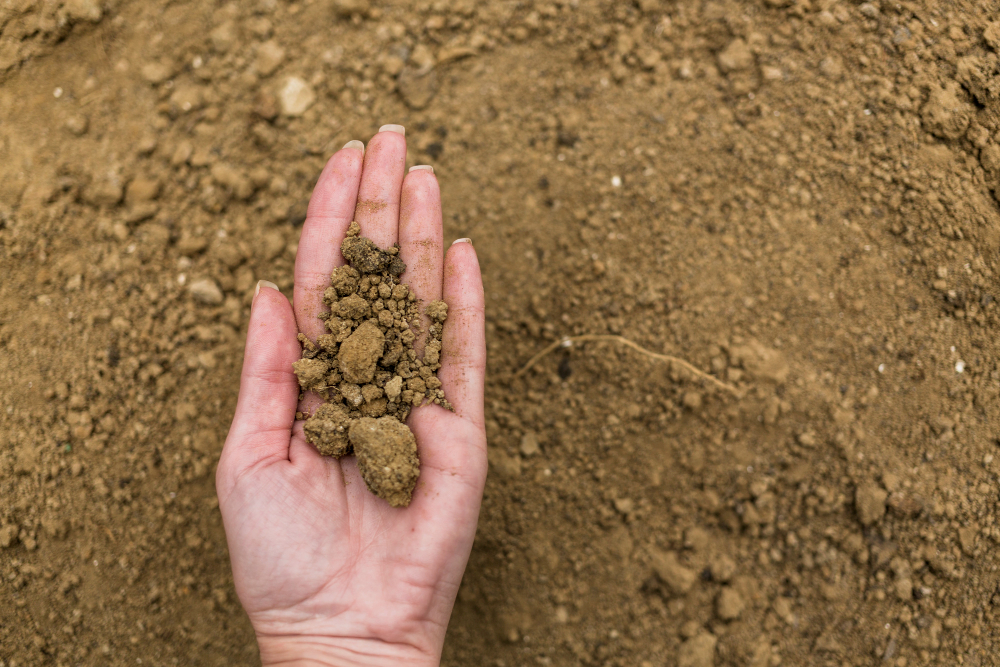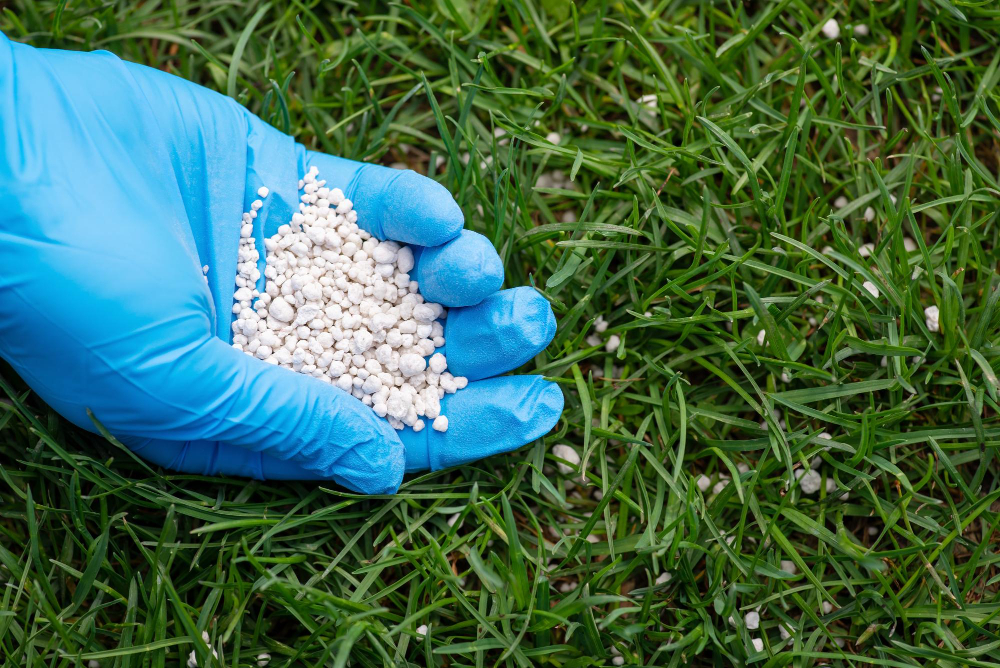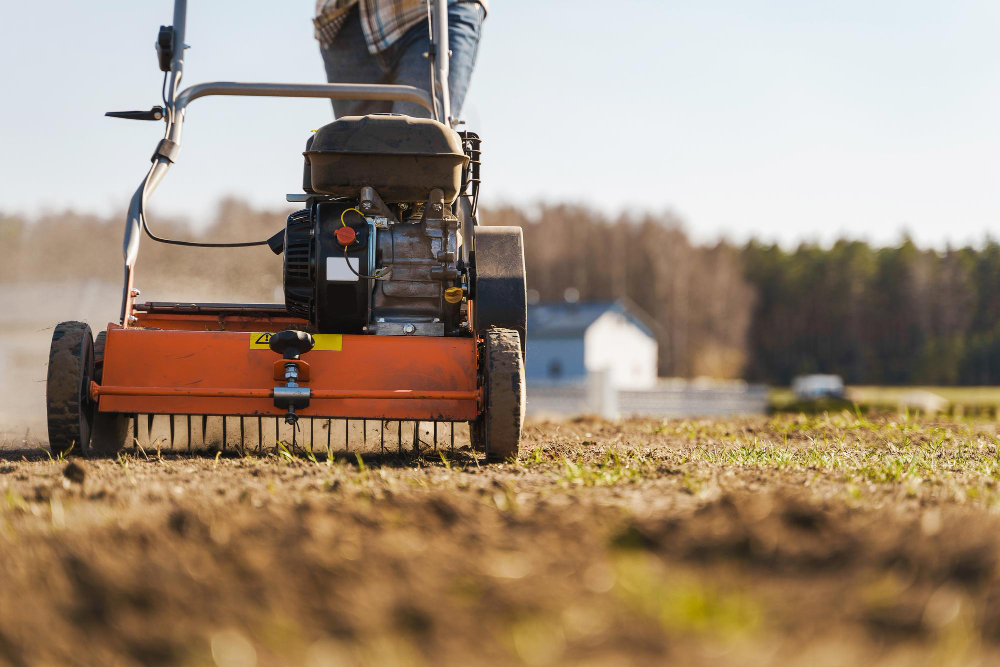Last updated on
Taking care of your lawn is more than just an aesthetic endeavor – it’s a crucial part of maintaining the overall health and vibrancy of your outdoor environment.
A well-maintained lawn not only adds curb appeal and increases the value of your property, but also contributes to a healthier ecosystem by filtering rainwater and providing a natural habitat for beneficial insects. Proper lawn care is not a one-off activity, but rather a continuous process that requires regular attention and care.
This guide aims to help you understand the importance of lawn care in everyday life and provide step-by-step instructions on how to properly care for your lawn to ensure its health and longevity.
What's Inside
Understand Your Soil and Choose the Right Grass

The first two steps involve understanding the particular type of soil in your lawn and choosing the right grass. The results from a soil test can reveal the pH and nutrient levels, and help you determine which grass type is best suited for your region and soil.
The key is to select a grass that thrives in your specific growing conditions, whether it’s sandy or clay-based soil and areas with full sun exposure or partial shade. For example, if you plan to use mulching blades with a mower, choosing a thick blade of grass that can withstand higher levels of foot traffic is advisable.
Moreover, some grasses require more water and fertilizer than others, so it’s crucial to select a variety that fits your maintenance schedule and budget.
Maintain a Regular Watering and Mowing Regime

One of the keys to a healthy lawn is regular watering and mowing. Lawns typically need about 1 inch of water per week, with early mornings being the ideal time to water to minimize evaporation. Mow your lawn regularly, ensuring not to cut more than one-third of the grass blade at a time.
This practice encourages strong root growth and shades the soil, which helps to prevent weed growth. It’s also important to keep your blades sharp to avoid damaging the grass. If you’re unsure about how often to water your lawn or what height to mow, consult with a local gardening expert or your county extension office for tailored advice.
Fertilize Your Lawn

Your lawn requires essential nutrients to grow lush and green. A slow-release fertilizer applied in the spring and fall will provide a steady supply of these nutrients. When choosing a fertilizer, look for the N-P-K ratio (nitrogen-phosphorus-potassium) on the label.
This indicates the percentage of each nutrient in the product, with nitrogen being crucial for leaf and stem growth, phosphorus for root development, and potassium for overall plant health. It’s also important to follow recommended application rates to avoid over-fertilization, which can harm your lawn and contribute to water pollution.
Aerate and Control Weeds

Allow air, water, and nutrients to penetrate your lawn’s roots by aerating it. This aids the roots in growing deeply, resulting in a stronger, more vigorous lawn.
Regular lawn care often supports weed control, but sometimes more direct methods like hand-weeding or cautious use of herbicides may be required. Remember to always follow the product’s instructions carefully and avoid spraying on windy days or when rain is expected.
Additionally, overseeding in thin areas can help prevent weed growth by creating a dense canopy of grass. In case of significant weed infestation, seek professional assistance to identify the type of weeds and address them with appropriate methods.
Manage Diseases and Pests
Stay vigilant for signs of disease or pests. There are numerous types of fungicides and pest control products available. If necessary, seek advice from a lawn care professional. Be sure to follow the recommended application rates and instructions when using these products.
Properly maintaining your lawn can help prevent disease and pest problems, but if you do experience an issue, early detection and treatment are key to preventing widespread damage. A great way to monitor your lawn’s health is by performing regular visual inspections and keeping an eye out for any changes or abnormalities.
Provide Seasonal Care
Depending on your climate, additional care during the fall and winter months might be necessary, such as raking leaves and protecting your lawn against frost. In colder regions, grass roots will continue to grow until the ground freezes, so it’s crucial to keep your lawn well-maintained throughout the year.
In warmer areas, summer heat and drought can cause lawns to go dormant or turn brown, but proper watering and fertilization can help prevent this. Adjusting your maintenance routine according to seasonal changes is crucial for maintaining a healthy and vibrant lawn year-round.
With these step-by-step instructions, you now have the knowledge and tools to properly care for your lawn. Remember that a well-maintained lawn not only enhances the appearance of your property but also contributes to a healthier outdoor environment.
By understanding your soil, watering and mowing regularly, fertilizing correctly, controlling weeds and pests, and providing seasonal care, you can ensure the longevity and overall health of your lawn. So get ready to put in some work and enjoy the benefits of a lush, green lawn!




